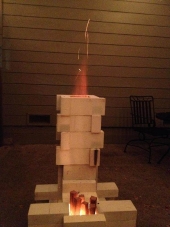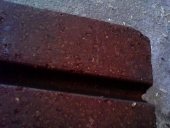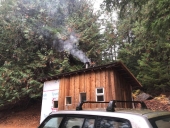












best regards, Byron









rob hinkle wrote:John, Byron, Thanks for your replies. I went ahead and wrapped the riser with insulation and bermed the burn tunnel and feed tube, and got amazing results! Now, all I have to do is figure out how I am going to get my barrel installed on the completed J-tube (core) as my ceilings are few inches too low!

God of procrastination https://www.youtube.com/watch?v=q1EoT9sedqY




rob hinkle wrote:John, Byron, Thanks for your replies. I went ahead and wrapped the riser with insulation and bermed the burn tunnel and feed tube, and got amazing results! Now, all I have to do is figure out how I am going to get my barrel installed on the completed J-tube (core) as my ceilings are few inches too low!
best regards, Byron








best regards, Byron













God of procrastination https://www.youtube.com/watch?v=q1EoT9sedqY




Byron Campbell wrote:Yes I believe you've got a good handle on it Rob. The way the system is described in "the book", the two barrels are joined by their ends that would normally accept their removable lids (joined lip to lip with the standard barrel band clamp). So in your application one option would be to cut your top barrel to length with clamping end intact. Then close the cut end with a welded on lid, or even make one from a disk of heavier gauge steel for a nice heavy cook surface.
Here's another idea that may help you avoid the welding chore. Common 55 gal. drums have two molded in strengthening or stiffening bulges encircling their circumference, one at about 1/3 the barrels length and the other at about the 2/3 point. If the barrel was shortened by cutting it at the apex of one of those molded in bulges it would make for a nicely flared opening to facilitate clamping to the other barrels lip. Best to try this out first with a scrap barrel.
As to the gasket to seal the two barrel sections together, Wisner mentions using fiberglass woodstove door gasket, high heat foil tape, then the original ring clamp (band clamp).




best regards, Byron

|
It's a tiny ad. At least, that's what she said.
The new kickstarter is now live!
https://www.kickstarter.com/projects/paulwheaton/garden-cards
|






